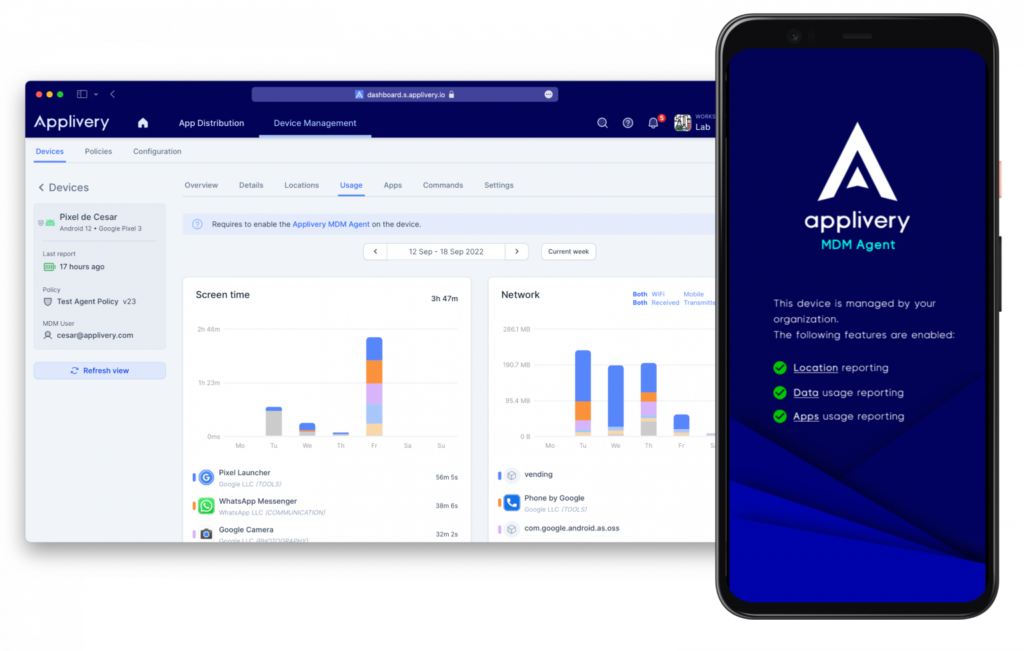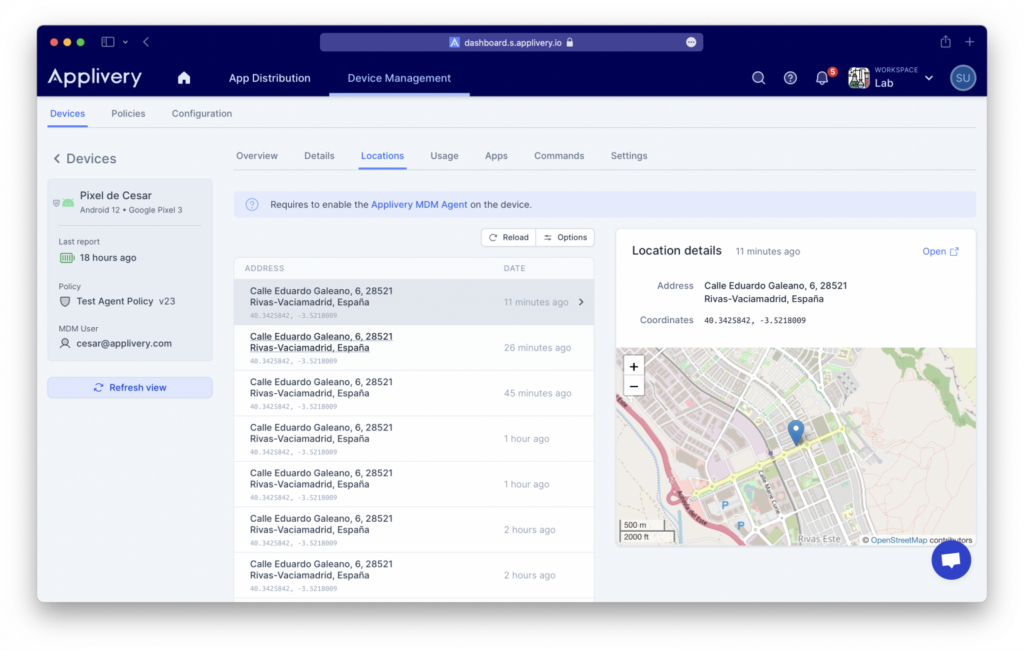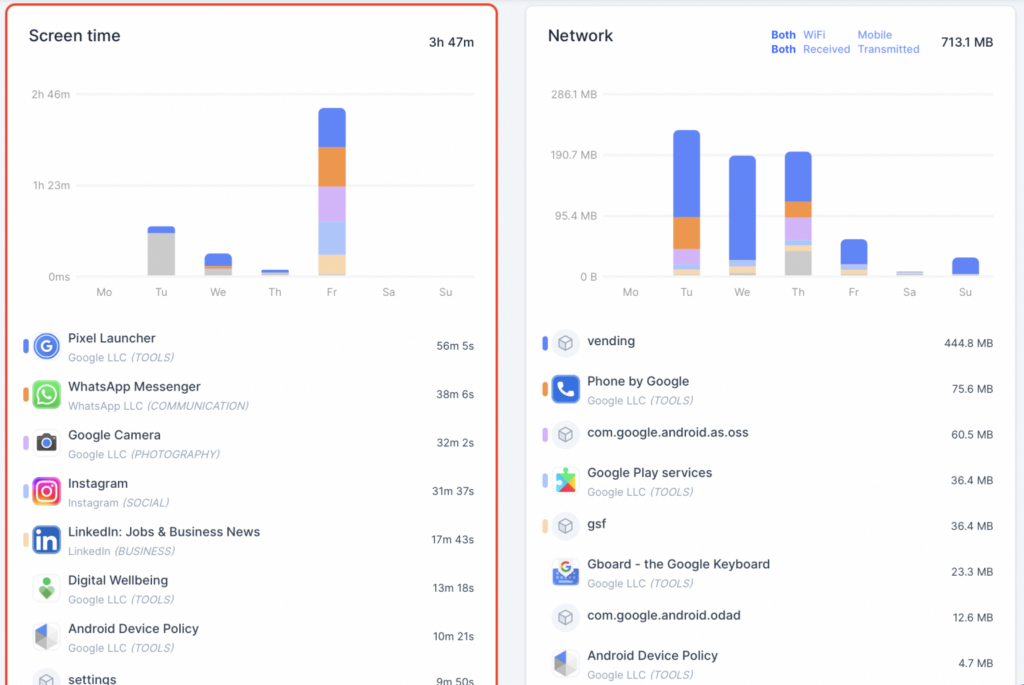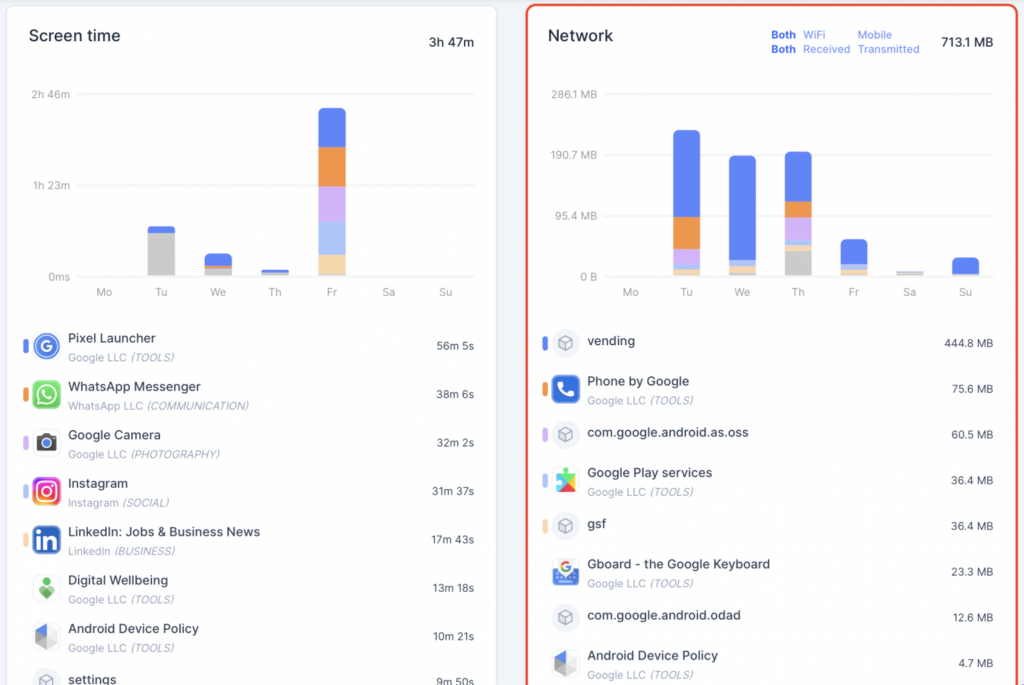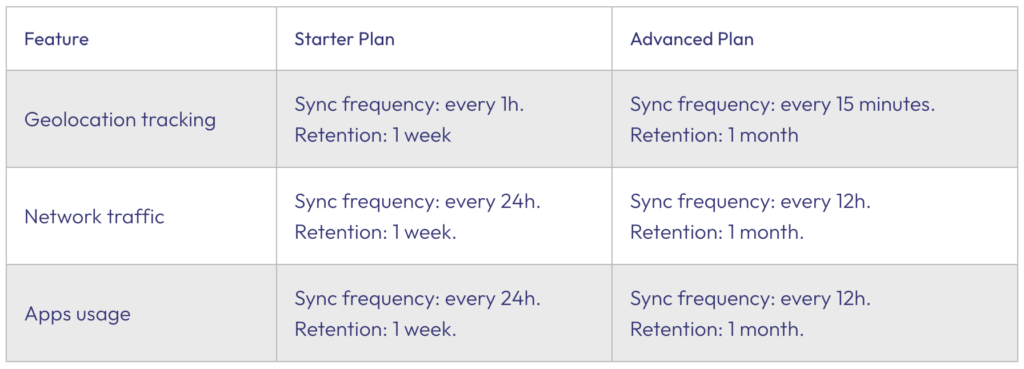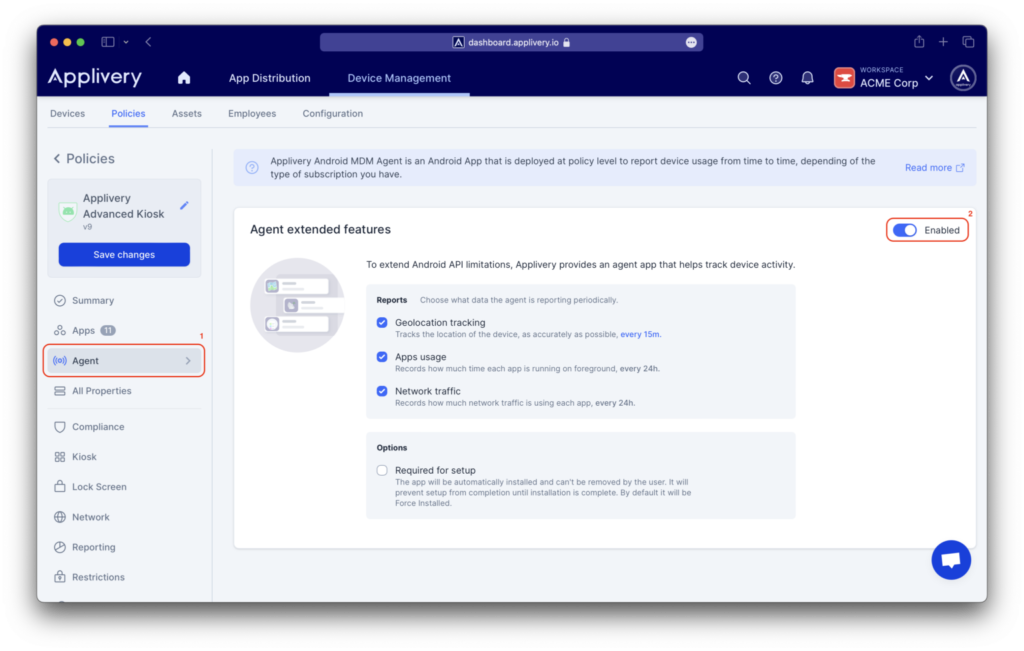In the landscape of mobile technology, effective device management is the linchpin for ensuring seamless operations and security. The paradigm shift towards mobility has necessitated robust solutions, and at the forefront stands Applivery Device Management. In this comprehensive exploration, we’ll delve deep into the world of Android MDM, shedding light on the significance, features, and the evolution of mobile device management.
The Evolution of Mobile Device Management (MDM)
Mobile Device Management, commonly known as MDM, is a pivotal aspect of IT administration, focusing on the supervision of mobile devices within an organization. This includes smartphones, tablets, and other mobile devices that play an integral role in modern business operations.
- The rise of Android and the need for MDM
As Android solidifies its position as the dominant mobile operating system, the need for effective Android MDM solutions becomes increasingly crucial. Managing a fleet of Android devices, with diverse versions and manufacturers, requires a comprehensive approach to ensure uniformity, security, and optimal performance.
The Applivery advantage: Android Agent
At the heart of Applivery’s device management arsenal lies the Android Agent – a versatile and powerful tool designed to extend the capabilities of Android’s native APIs.
Let’s explore the myriad features that set Applivery apart in the realm of mobile device management:
- Geolocation tracking: whereabouts at your fingertips
One of the standout features of the Applivery Android MDM Agent is its geolocation tracking prowess. Beyond simple latitude and longitude coordinates, it provides a comprehensive view of the device’s journey, including detailed street addresses. This granular data is accessible through the dashboard, enabling organizations to track the physical movements of their mobile assets.
- Apps usage reporting: decoding digital behavior
Understanding how applications are used is fundamental to optimizing device usage. The Android MDM Agent queries foreground activities, providing weekly usage analytics. The top 5 applications are highlighted, offering insights into employee behavior and preferences. This feature proves invaluable for tailoring policies, enhancing productivity, and ensuring a seamless user experience.
- Network traffic monitoring: navigating the digital highway
In the era of constant connectivity, monitoring network traffic is paramount. The Applivery Android MDM Agent goes beyond app-level insights, providing detailed reports on incoming and outgoing network traffic. This not only aids in identifying data-hungry applications but also contributes to optimizing data usage across the organization.
- Tailored features for every need
Recognizing the diversity in organizational requirements, Applivery offers flexible plans for its Android MDM solution. Whether you are on the Starter Plan or the Advanced Plan, you can customize sync frequency and data retention based on your preferences. This flexibility ensures that you receive relevant and timely information tailored to your unique management needs.
Security at the core: safeguarding your mobile environment
In the realm of mobile device management, security is non-negotiable. Applivery understands the sensitivity of the data traversing through devices and, therefore, implements robust security measures. The Android MDM Agent employs best-in-class encryption algorithms, including SHA-256 cryptographic hash for runtime encryption and SSL TLS 1.3 for securing data in transit. Once data reaches Applivery servers, it is further fortified with SHA-256 encryption at rest.
Easy implementation: Applivery in action
Implementing the Applivery Android MDM Agent is a straightforward process. At the policy level, users can enable the agent seamlessly. Navigate to Android policies from Device Management > Policies, select the desired policy, and access the Agent section. The simple toggle of the “Enable” button, choice of installation mode, and a click on “Save changes” unleash the power of the Android MDM Agent.
- Policy customization: meeting your unique requirements
Understanding that one size does not fit all, Applivery allows users to customize policies based on their specific needs. The Sync frequency and Retention periods can be adjusted, ensuring that the Android MDM Agent aligns perfectly with the organization’s management strategy.
- Important notice: proactive reporting activation
It’s important to note that while the Android MDM Agent is deployed to all devices associated with a particular policy, reporting does not commence until the agent is opened at least once. This initiation process includes granting explicit access permissions. This ensures that data reporting begins only when the user acknowledges and permits the necessary access.
Programmatic launch: seamless ointegration into your workflow
In certain scenarios, initiating the Android MDM Agent programmatically becomes essential. This could be during the enrollment process or from within another application. To achieve this, developers can utilize an Intent action:
com.applivery.mdm_agent.action.LAUNCH
For compatibility with Android 11 and beyond, it’s imperative to ensure app discoverability. Developers can achieve this by adding specific query information to the caller app’s Manifest:
<manifest package=”com.example.app”>
<queries>
<intent>
<action android:name=”com.applivery.mdm_agent.action.LAUNCH” />
</intent>
</queries>
…
</manifest>
The crucial role of policies: shaping smartphone behavior
Policies play a pivotal role in shaping the behavior of smartphones within an enterprise. Whether it’s defining acceptable app usage, restricting access to certain functionalities, or enforcing security measures, policies lay the foundation for a secure and organized mobile environment.
- Policies on smartphones: striking the right balance
Balancing flexibility with control is the essence of crafting effective policies on smartphones. It involves understanding the diverse needs of users, the importance of certain applications for productivity, and the imperative of ensuring data security. With the right policies in place, organizations can harness the full potential of mobile devices while mitigating potential risks.
Endpoint management: a holistic approach
The concept of endpoint management has evolved beyond traditional device management. With the proliferation of diverse devices, including smartphones, tablets, and even wearable technology, a unified endpoint management (UEM) approach is gaining prominence.
- Unified endpoint management: holistic oversight
Unified Endpoint Management goes beyond MDM, encompassing a broader array of devices and platforms. It provides a centralized platform for managing mobile devices, desktops, and even IoT devices. This holistic approach streamlines administrative tasks, enhances security, and ensures a consistent user experience across diverse endpoints.
Android version history: navigating the evolution
Understanding the evolution of the Android operating system is crucial for effective device management. Android Version History reflects the iterative improvements, feature additions, and security enhancements introduced with each version. From Cupcake to the latest dessert-inspired release, staying abreast of the Android journey is essential for ensuring compatibility and leveraging the latest features.
Mobile application management: beyond MDM
While MDM focuses on the overall management of mobile devices, Mobile Application Management (MAM) hones in on the applications themselves. MAM involves the deployment, securing, and monitoring of specific mobile applications within an organization.
- App management: maximizing efficiency
Efficient app management is a key component of a comprehensive mobile device management strategy. It involves not only ensuring that essential apps are available on devices but also monitoring their usage, updating them regularly, and securing them against potential vulnerabilities. Applivery’s Android MDM Agent seamlessly integrates app management into its suite of features.
The uncharted territory of new devices
As technology evolves, so does the landscape of mobile devices. The arrival of new devices, whether they be smartphones, tablets, or innovative form factors, introduces both opportunities and challenges for device management. Organizations must be agile in adapting their MDM strategies to embrace the capabilities of new devices while maintaining security and compliance standards.
- Bring Your Own Device (BYOD): managing personal devices
The advent of BYOD policies has introduced a new dynamic into the device management arena. Allowing employees to use their personal devices for work brings flexibility but also requires a nuanced approach to security and data management. Applivery’s Android MDM Agent provides the tools necessary to manage both corporate and personal devices effectively.
The crucial role of MDM in enterprise mobility
In the contemporary enterprise landscape, mobility is not just a trend; it’s a necessity. Mobile devices have become indispensable tools for productivity, communication, and access to critical information. The role of Mobile Device Management in Enterprise Mobility extends beyond device oversight; it’s about empowering organizations to harness the full potential of mobile technology while ensuring security and compliance.
The future of MDM: a glimpse ahead
As technology continues to evolve, so does the landscape of device management. The future of MDM holds promises of even greater automation, intelligence, and integration. From AI-driven analytics providing predictive insights to seamless integration with emerging technologies, the future of MDM is poised to be both transformative and empowering for organizations navigating the complexities of mobile device management.
Applivery's Android MDM - pioneering device management excellence
In the ever-evolving realm of mobile device management, Applivery stands as a pioneer, redefining the landscape with its robust Android MDM Agent. From geolocation tracking to network traffic monitoring, Applivery’s suite of features addresses the diverse needs of organizations navigating the complexities of device management.
As organizations embrace the diversity of mobile devices, from Android smartphones to tablets and beyond, Applivery’s Android MDM Agent provides a comprehensive solution. With security at its core, flexibility in its features, and an eye on the future of mobile technology, Applivery’s Android MDM Agent is not just a tool; it’s a strategic asset for organizations seeking excellence in device management.
In the journey towards a more connected and mobile future, the role of Applivery’s Android MDM Agent is not just about managing devices; it’s about empowering organizations to thrive in the dynamic landscape of mobile technology. Applivery’s commitment to excellence, security, and innovation cements its position as a trailblazer in the ever-expanding world of mobile device management.
